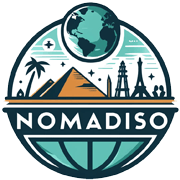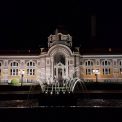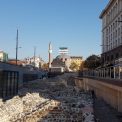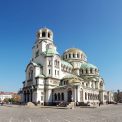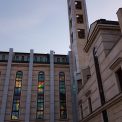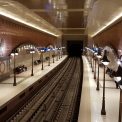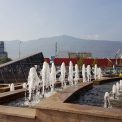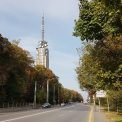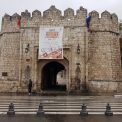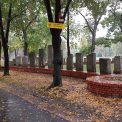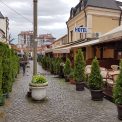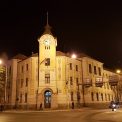Sofia can be described as the heart of the Balkan Peninsula. Its history dates back to Roman times when the ancient city of Serdica was an important center of activity. As a new destination of Wizz Air, Sofia is an ideal tip for a long weekend. Thanks to Ryanair, you can combine it with Serbia – exploring Sofia – Niš.

Contents
Day 1 – Evening arrival in Sofia
Day 2 – Free city guide and Boyana
Day 3 – Simeonovo cable car and parks
Day 4 – Serbian Niš
1st day – Evening arrival in Sofia
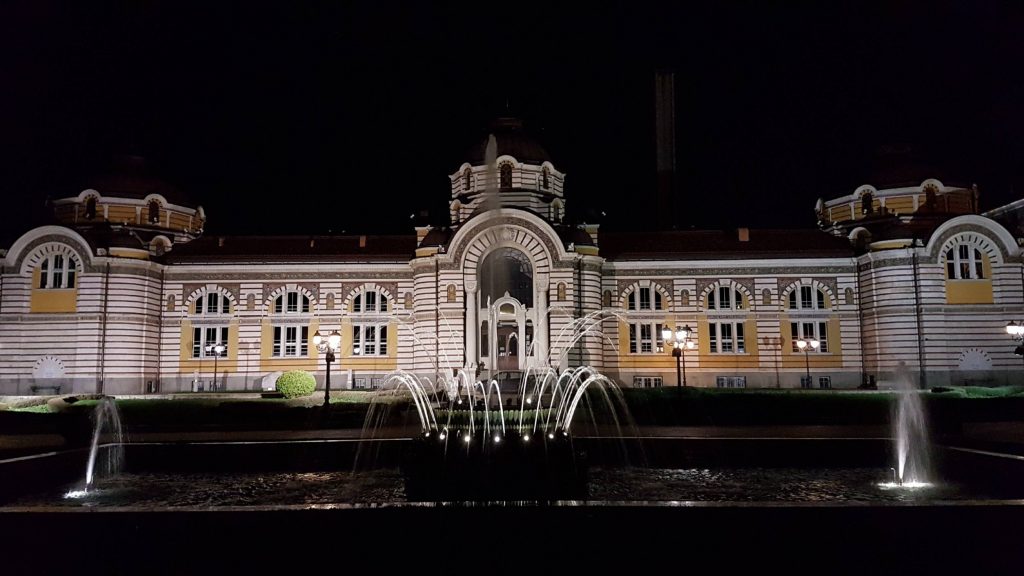
The new Wizzair line Bratislava – Sofia has been in operation since June 2017. Tickets for a long weekend can be purchased in advance for an incredible €20. You do not need a passport for Sofia and Niš, we can confirm that an ID card was sufficient. Transportation from the airport is possible either by bus (free shuttle or bus no. 84) and metro, or with 4 people, a taxi was worth it. The fact that you see yellow taxis everywhere is not a coincidence, as there are around 5000 registered taxis in the city.
TIP: We highly recommend the TaxiMe app (similar to Uber), where you can see the estimated price in advance. By registering your card, you get a discount of 2 lev on the first 5 rides
Our accommodation, Apartment Dragolev, is just a short distance from the center. It is a modern fully equipped apartment with a well-equipped kitchen. A few blocks away is Lidl, and next to it, you can get high-quality thermal water. It is really tasty, not the typical “egg water” we are used to from Piešťany. They say the water has healing effects, especially on the heart, judging by the number of people coming with large containers for water, we kind of believed it. By the way, tap water is drinkable too.
For dinner, following TripAdvisor’s recommendation, we stumbled upon Skaptobara restaurant, where we enjoyed burgers in flatbread and local Burgasko beer. On our way back, we stopped at a bar next to our accommodation. Price research indicated that it’s cheaper here than in our country. You’ll pay 2.50 – 3.00 levs for a local beer, and they asked for 7.50 for a mixed Long Island. Speaking of brands, we particularly enjoyed local beers like Kamenitza, Šumensko, and Zagorka. You can’t miss the wide selection of Czech beers such as Staropramen, stemming from history when the Czechs helped establish breweries in Bulgaria. The average salary in Bulgaria is 600 levs (approx. €306) and the pension is around 200 levs (approx. €102).
Day 2 – Free city guide and Boyana
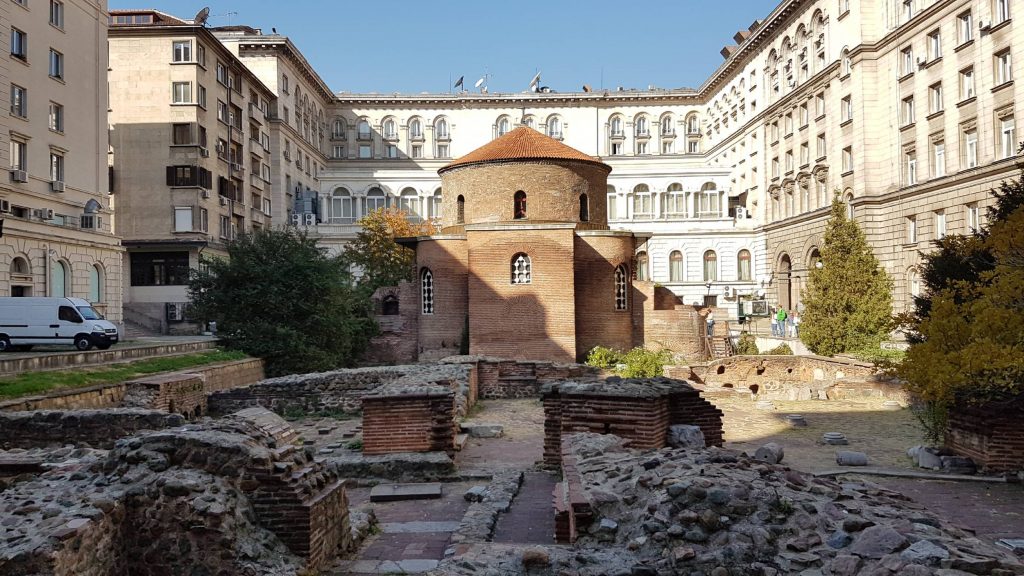
The Free city guide takes place every day at 10:00, 11:00, and 18:00 (May – October) or 11:00 and 18:00 (November – April) under the auspices of the non-profit organization Free Sofia Tour. The tour starts at the Justice Palace and lasts about 2 hours. Right at the beginning, we learn that the country’s symbol is the lev, according to national hero Vasil Levski. You can find them from coats of arms, the currency name – lev, to several statues in the city. The Bulgarian currency has a fixed exchange rate of 1BGN = 0.51€, similar to Bosnia and Herzegovina. The tour begins in Sveta Nedelya Square, where the eponymous Orthodox church St. Nedelya Church is located. Over 80% of the population is of Orthodox faith, hence the prevalence of churches here.
If there’s one thing to take away from this free city guide, it’s the knowledge that Sofia has four main symbols:
- Woman with a crown – Statue of Sveta Sofia
- Churches – Saint Sofia Church
- Mountains – Vitosha
- Thermal springs – Central Mineral Baths
Some city districts are located at an altitude of up to 700m, making Sofia the highest located capital city in Europe. Interestingly, Sofia does not have an old town. In the city center, you can find excavations from the original ancient city of Serdica from Roman times. Serdica is a beautiful example of religious symbiosis similar to Sarajevo. Here you can find a small medieval Orthodox Sveta Petka Church, Christian Cathedral of Saint Joseph, Jewish Sofia Synagogue, and Muslim Banya Bashi Mosque. The mosque is the only one preserved from the original seven. To the right of the mosque are thermal baths with a fountain and another healing thermal spring. They say it doesn’t help a broken heart 🙂
The tour continues to Independence Square, where the former communist leadership was located. Today, these are mainly parliamentary buildings and hotels. In the courtyard of the Sheraton Hotel, you will find an Orthodox church Church St. George. The Rotunda is the oldest preserved building in the city, built in the 4th century. In front of the presidential office stands the government guard.
Serdica is also a crossroad of metro lines. Yes, Sofia boasts two metro lines that have been in operation since 1998. You can buy metro tickets inside the metro station. A bit illogical is that with a day pass, you have to revalidate the tickets at the window where you bought them before each metro entry.
TIP: A paper day ticket for public transport costs 4 lev (note: valid from midnight, not for 24 hours), or a three-day pass for 10 lev, but you also need to buy an electronic card for 2 lev to go with it.
Finally, three more churches to visit:
- Church of St Nicholas the Miracle-Maker – a beautiful church of the Russian Orthodox Church
- Saint Sofia Church – The city of Sofia got its current name from the St. Sofia Church, which was the city’s cathedral at that time. An interesting fact is that there was no space for a bell in the church, so it’s placed on a tree across from it 🙂
- Cathedral Saint Alexander Nevski – A top attraction in Sofia, the Cathedral of St. Alexander Nevsky is the second-largest Orthodox church in the world. Up to 10,000 people can attend services at once. It is a symbol of the liberation of the Bulgarians from Ottoman rule.
We have lunch at the local restaurant Mehana Izbata, recommended by the guide.
TIP: Check your restaurant bills carefully, as we were charged an extra 6.90 lev for food here (and this was not the first nor the last such experience)
After lunch, we call a taxi through the TaxiMe app. It shows us around 10 lev to go to Boyana. The main attraction there is the medieval UNESCO church Boyana Churchfrom the 11th century. The park area is free, but the entrance inside is 10 lev. This is mainly due to the rare frescoes and photography.
Boyana is a good starting point for hiking, but don’t underestimate it like we did. You should reserve at least half a day, and we do not recommend doing it in sneakers. The whole circuit to the waterfall + lake takes about 4 hours and covers an 8-kilometer route.
TIP: At the beginning, there is a turn to the left where you can refill your water at a drinking fountain.
Due to a lack of time, we chose only the waterfall, which is a shorter but steeper path. The trail leads through the forest, and towards the end, you may have to crawl in some places. There’s a lookout over the city behind the waterfall. We were back in the city by 6:00 PM to make it to the mass at the Cathedral of St. Joseph. For dinner with a huge selection of dishes, you can experience the Happy Grill restaurant. But be careful with the bill 🙂 For a final drink, we are heading to our bar near the accommodation.
Day 3 – Simeonovo Cable Car and Parks
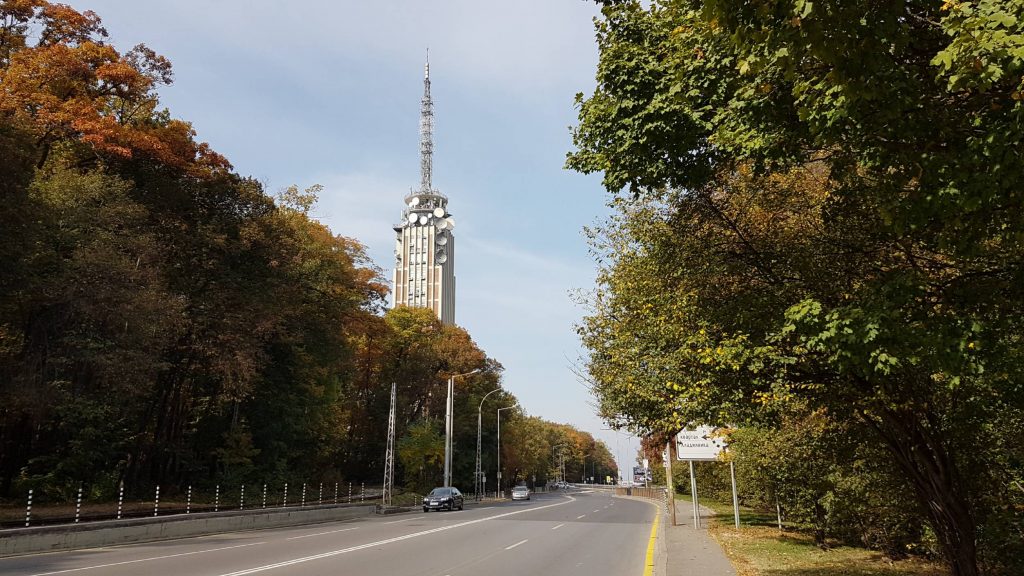
Today we had planned to take the cable car to Vitosha Mountain. You can get there by a combination of metro to the final stop Vitosha and bus 122, which stops across from the Paradise shopping center. We wandered into Starbucks and a few shops out of curiosity. Prices here are extremely high by Bulgarian standards, and we don’t understand how people afford them. You need to take bus number 122 back to the final stop. Tickets for the cable car cabin cost 10 or 14 leva round trip. The peak station Aleko is at an altitude of 1800m. For the more adventurous, there is a trail leading to the highest peak.
TIP: We recommend checking the Vitosha Ski website in advance as the cable car schedule may vary (the page cannot be switched to English, but you can translate it through Chrome).
As you may have guessed, the Simeonovo – Aleko cable car was not operating during our visit. We returned by bus 123 to the final stop, which is G.M. Dimitrov metro station. From there, it’s one stop to Joliot Curie Station.
An alternative program is a visit to Borisova Gradina Park. This park is the oldest park in Sofia and has a distinctly communist feel. You can see the TV tower, an observatory, the Bratska Mogila memorial, a lily pond, the Vasil Levski National Stadium, children’s playgrounds, and numerous monuments from the communist regime. In the adjacent park, there is a comic-style monument featuring Superman, officially known as the Monument of the Soviet Army.
TIP: Near the park, we recommend the luxurious restaurant Shtastliveca, with an interior reminiscent of a castle and reasonable prices.This afternoon, we are moving to the Serbian city of Niš. Tickets for the bus are reserved in a slightly unconventional way through a phone line of the local carrier MATPU at the number +359899912906. They speak English fluently, so there’s no need to worry. Just to be safe, we are going to pick them up early in the morning so we don’t cause any confusion later on. The closest metro stop near us is Lavov Most. We will ride one stop to the Central train station, from where we will walk to the bus station Serdika, where the ticket office under the name MATPU is located – office number 107.
We board the bus at 4:00 PM as planned. The journey itself would take two hours, but at the borders, you have to disembark for identity and passport checks. Include stops for a rest break and the journey will stretch to a total of 3 hours. The accommodation The Only One Suites is a short walk from the bus station. For four people, it comes down to an unbelievable 6.25€/night.
If Sofia was cheap, Niš is even cheaper. The exchange rate at the time of our visit was approximately 1€ = 119.23 RSD. For a treat, the stylish venue Tramvaj served us well, their “tram cake” for 250 RSD could easily be declared the most caloric cake of the year. For mixed drinks, the restaurant Pandora was excellent. But what bothered us was that these establishments do not have a non-smoking section.
Day 4 – Serbian Niš
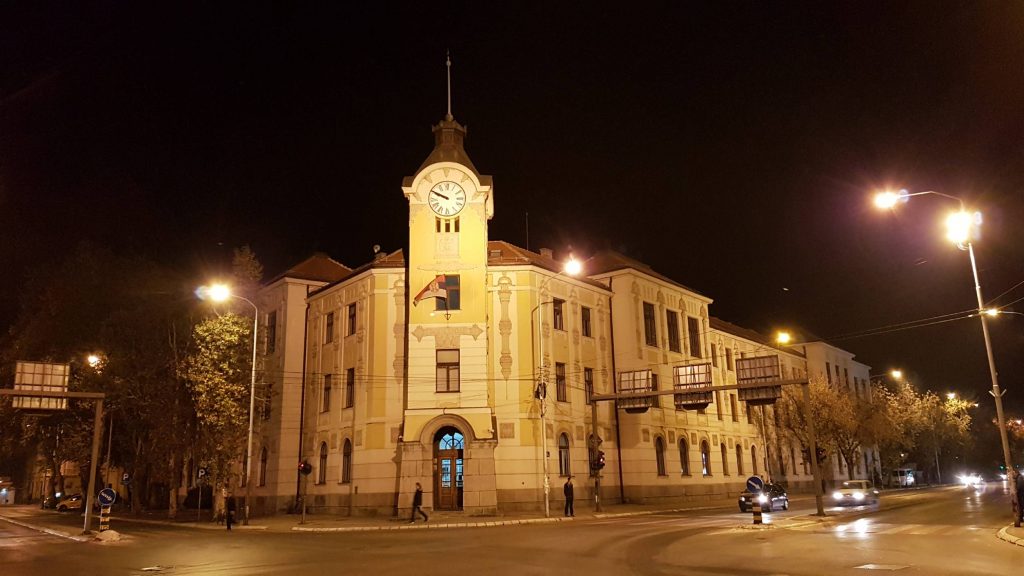 Niš is a city on the Nišava River and with its 260,000 inhabitants, it is the third largest city in Serbia. It has become popular among Slovaks, especially with the new Ryanair route from Bratislava. The city center is close by and easily accessible on foot. The biggest attraction of the city is undoubtedly the Niš Fortress. Entry to the fortress area is free. You can walk along the walls, visit the ancient Bali-Beg Mosque, the lapidarium, excavations, or simply stroll through the park.
Niš is a city on the Nišava River and with its 260,000 inhabitants, it is the third largest city in Serbia. It has become popular among Slovaks, especially with the new Ryanair route from Bratislava. The city center is close by and easily accessible on foot. The biggest attraction of the city is undoubtedly the Niš Fortress. Entry to the fortress area is free. You can walk along the walls, visit the ancient Bali-Beg Mosque, the lapidarium, excavations, or simply stroll through the park.
The center starts at King Milan Square with a statue of a horse and a fountain. Prices in shopping malls are exorbitant, so instead head to the underground passage.
TIP: The underground shopping passage starts at the horse statue, and payments were accepted in cash in dinars only.
A favorite spot for residents of Niš as well as tourists is Kazandžijsko, a small street with an old stone pavement and cafes on both sides. However, it didn’t quite captivate us. For a luxurious lunch, we recommend the Stara Srbija restaurant. Very pleasant atmosphere, friendly service, and reasonable prices. You can get a hearty gourmet pleskavica for less than 3 Euros.
Other interesting places we planned to visit but ran out of time for were the concentration camp Crveni Krst, Bubanj Memorial Park and Skull Tower.
TIP: The bus number 34A to the airport costs 50 cents (60 RSD), the bus stop is marked on our map. Board the bus through any door and buy your ticket directly from the driver.
Our flight to Bratislava departs at 4:05 PM local time. If Ryanair still has an issue with online check-in where only passport type can be selected, know that we also checked in this way but entered our ID card number. There were no issues.
